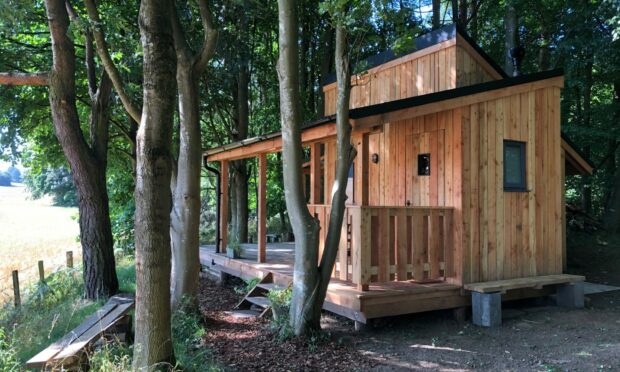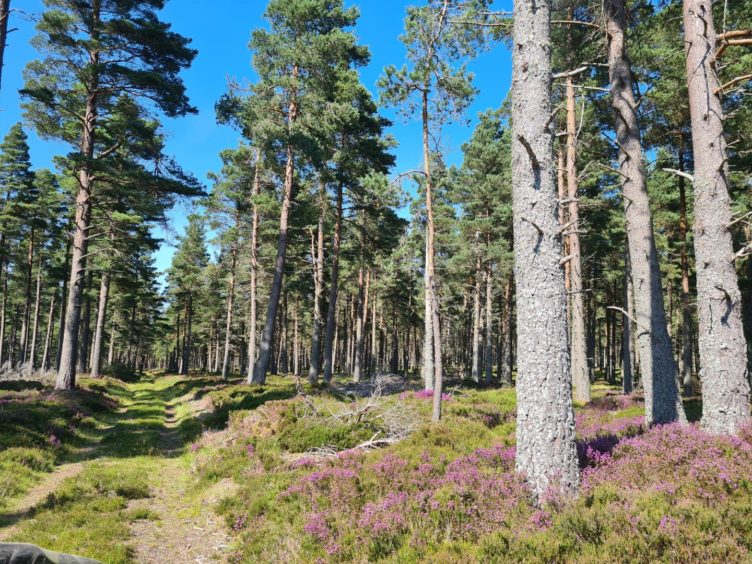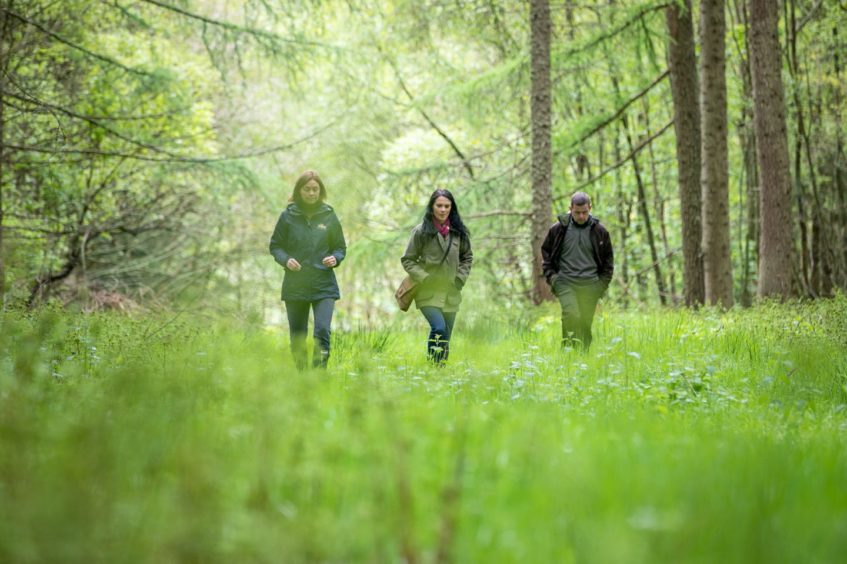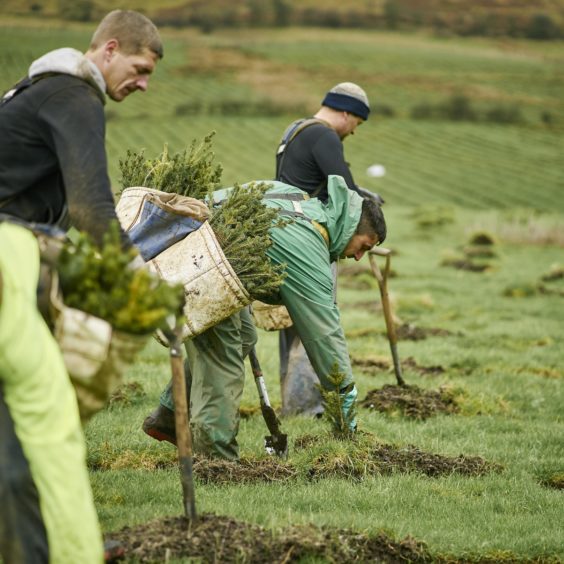Michael Alexander speaks to the chairman of Reforesting Scotland Alan Carter about a campaign aiming to build a Hut of Wellbeing in Fife.
For people dealing with serious, chronic or terminal illnesses, it’s widely acknowledged that being out in nature is very good for their physical and mental health.
Caring for people in such situations is also stressful, and many carers need a relaxing break every now and again.
It’s with this in mind that Reforesting Scotland and a local Fife steering group have launched a campaign to build a Hut of Wellbeing.
With a fundraising target of £60,000, the hut would be an opportunity for people to go and spend a couple of days or a week’s respite off-grid, away from the hustle and bustle of everyday life and staying in woodland.
Hutting tradition
Chairman of Reforesting Scotland Alan Carter explains that many Northern European countries have a tradition of woodland or mountain huts.
Usually it’s a place urban families go for stress-free holidays and weekends.
“Probably the closest to it in Scotland is the Broons and their but and ben!” he says.
Mr Carter explains, however, that the hutting tradition all but died out in Scotland in the last century, partly because of land ownership issues.
“It’s very difficult for ordinary folk to get land compared to other European countries and partly because of planning,” he says.
“It was really difficult to get permission to build something small and simple and low impact.”
Reforesting Scotland pioneered a recent change in planning law to make getting permission for and building a hut easier in Scotland.
Mr Carter explains that one of their members, who has cancer, had the vision of one of these huts that could be available for short stays for people in situations like his own.
Contact with nature is good for both physical and mental health, but someone in poor health or a difficult situation cannot be expected to build a hut themselves.
The Hut of Wellbeing idea was put through Ninian Stuart of Falkland Estate to the Reforesting Scotland directors who gave it their support.
If the fundraising campaign and wider concept is successful, they hope it could become a template for similar projects elsewhere in Scotland.
But they also hope it could lead to a wider hutting revolution.
Physical and mental health
“There’s been a lot of research done over the years that suggests spending time close to nature is good for peoples’ physical and mental health,” says Mr Carter.
“It lowers stress levels, it lowers levels of inflammation and it boosts immune systems.
“On the other hand if people take their mobile phones and other distractions with them, the same benefits are not as forthcoming as if they are close to nature, paying attention to nature and having time to settle into nature.
“So huts give you that feeling. They are very simple. There are not a lot of distractions. You are very close to nature. You are focussing on very simple tasks. You maybe light the fire, make a cup of tea.
“You’ve not got lots of big complicated distractions pressing on you.
“And a lot of people find that beneficial who don’t have any kind of health issues, just ordinary life.”
Mr Carter said £60,000 would allow them to build the hut and run it for several years, greatly reducing their dependence on match funding from trusts and donations from users, securing the future of the project through its early years.
Local organisations supporting people suffering illness or other hardships, and their carers, would be able to refer them for a weekend or midweek stay.
The Hut of Wellbeing will be built in an existing woodland hutting community in Fife.
Being embedded in a supportive community will be an important part of looking after the hut and its users.
While the project was conceived before coronavirus, the pandemic has both made people more aware of the mental health benefits of access to nature and put pressure on Scotland’s landscape and accommodation.
That’s why they believe the need for a Hut of Wellbeing is more urgent now than even before.
Making it a reality
“Reforesting Scotland has already put in money to engage an architect and builders, to make sure that the hut gets planning permission and suits both the site and its users,” he says.
“A steering group of hut users and care organisations is working with us to make the project a reality.
“We now need to raise more funds to build the hut itself and then run and maintain it once it is built.”
An existing community makes use of larch from Falkland Estate. It’s a very durable material and lovely to work with during construction.
Common Good practice, when it comes to hutting, means that they should be built from low impact materials and huts should be able to be removed completely at the end of their lifetime.
Looking at the bigger picture, striking a balance between bringing people to forests and maintaining the benefits of seclusion is a challenge for any kind of outdoor activity. Mr Carter says it’s easier in forests, however.
“If you are out on a mountain and you see half a dozen other people,” he says, “it’s like, ‘oh no, it’s like Sauchiehall Street out here’.
“But if you are in a wood, you don’t even know those half a dozen other people are in the wood, along with you.
“So woods are both more resilient and they absorb people in that way.
“For me, increasing forest cover, forest access and forest quality are the answers to that problem – but they are not really a problem themselves.”
Forestry in Scotland
Mr Carter says COP26 clearly showed a lot more is needing done to deal with climate related issues.
However, there are also a number of reasons to be positive about forestry in Scotland.
“I think the Scottish Government being committed to restoring Scotland’s rainforest – the oak and hazel and rare habitat down the west coast of Scotland – is good because that is one of the most threatened habitats in Scotland,” he says.
“But I think in general, the big risk at the moment with forestry and climate change is that there will be lots of really bad forestry done, just for carbon reasons and it’ll be done to excuse ‘business as usual’ as well.
“We’re seeing in the Highlands people starting to worry about this. There’s a lot of land bought up for that.”
“At the moment it’s been a lot of large landowners buying large estates to do this.
“And Scotland has the most unequal land ownership pattern in Europe, close to the world, already, which is why it’s developing that way.
“But it also has the potential to sustain that situation.
“We’d like a bit more attention from the Scottish Government to make sure that the forestry that happens for carbon reasons is also good community forestry and that communities are able to take part in and get lands through that process, have a say in planning those woods and access to them.”
Widening public access
The Thousand Huts campaign was set up by Reforesting Scotland in 2011 to revive the hut movement in Scotland.
The recent change in legislation was the “big enabling thing”.
The next priority is basically getting more huts built.
“There’s various challenges to that,” adds Mr Carter.
“One is the lack of a hutting tradition and technical skills, and that’s as simple as having forums and Facebook groups and getting build schools going to get that culture and those skills.
“We’ve been working with the Forestry Commission to get a hutting community going on their land as they look at whether that’s a good use of their estates.
“They are the biggest landowner in Scotland.
“And we’d like to work more with planners because there’s been quite an uneven response from planners, and some are putting so many conditions on it that it kind of makes it only for wealthy people again.
“You’ve got to be able to afford to meet so many conditions which is not the spirit of hutting.”
When people talk about second homes, Mr Carter says affordability and the wider impact of second homes are often hot topics.
Because second homes are often quite substantial buildings they often have a big impact and they are expensive which price people out of their communities.
Huts, by contrast, address both of these issues, he says.
“You can only build something single storey up to 30 square metres and with recyclable materials which is removable,” he says.
“It’s defined to be low impact and also the building standard requirements are much lighter so it should be a lot less expensive than building a regular building.
“Both of those things should make that connection to the country a lot more accessible to everyone, although I suppose it’s inevitable that those with a bit more money are first off the starting blocks to taking advantage of that.
“What we want to support is the affordable accessible hutting that everyone can do. Getting access to land is a big part of moving that forward.”
Want to support the campaign?
Reforesting Scotland hope the Hut of Wellbeing can be built in 2022.
Details about the fundraiser can be found here https://www.crowdfunder.co.uk/hut-of-wellbeing



















